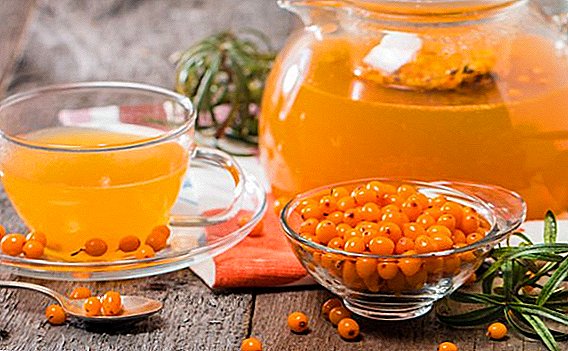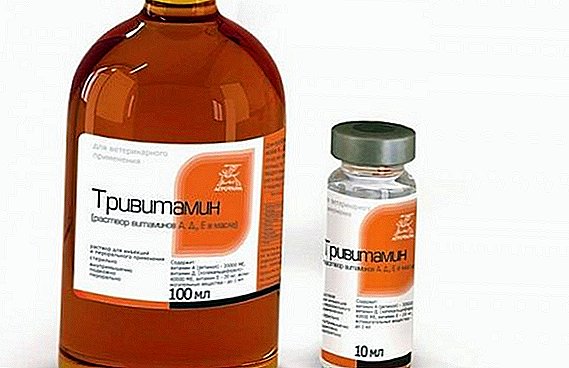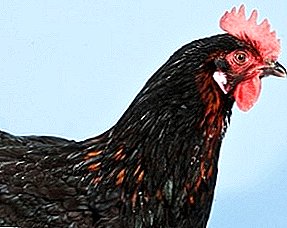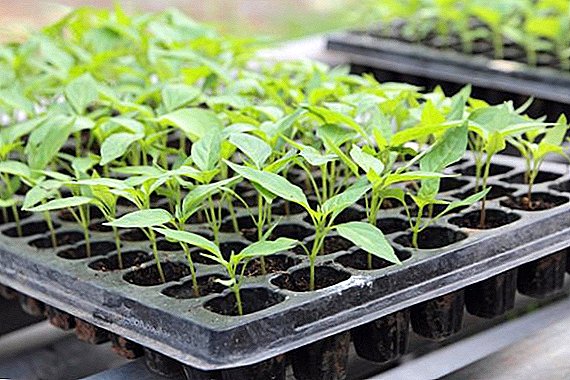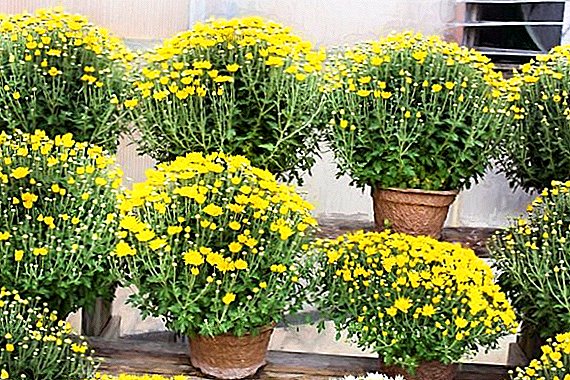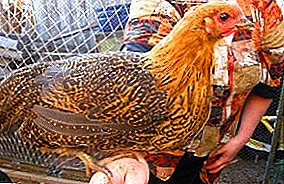
Swiss botanist Caspar Baukhin in 1620 first discovered rutabaga in Sweden. Turnip and rutabaga are members of the cabbage family, plants are often confused, and rutabaga is sometimes called Swedish turnip.
This article will discuss how to grow this useful crop in the open field and how to avoid problems.
We will also talk about the most common problems faced by gardeners, growing rutabagu on their site.
What is different from turnips?
First, turnips are usually smaller than a swede, the size of a golf ball, with a creamy white, smooth skin. The rutabaga is much larger, its rough skin is creamy white and partly purple, with a characteristic "collar." Although there is a perception that rutabaga is a product of Russian, not Scandinavian selection, one thing is clear - this is a northern vegetable, which significantly loses its taste in a hot climate.
Sorta
| Grade name | The term formation of the root | Average fruit weight | Description and taste of the fruit |
| Krasnoselskaya | 3-4 months | from 300 to 600 grams | Gray-green oval fruit with sugary flesh, well stored |
| Novgorodskaya | 4 months | 400 grams | Round fruit with a purple top, juicy pulp without bitterness |
| Hera | 3 months | 300-400 grams | Juicy round fruit with good taste |
| Child love | 3-3.5 months | 300-500 grams | Oval fruit with dense, juicy pulp |
| Vereisk | 3 months | 250-300 grams | Round fruit with yellow flesh, well kept |
| Kohalik blueing | 4 months | 800-900 grams | Fruit with yellow, tender and juicy pulp |
| Kuusiku | 5 months | 2 kilograms | Mediocre Fruit |
At present, new, and, as they say, leading varieties ahead of their predecessors have begun to appear: Lizi, Marian, Ruby. But little is known about them, and getting them is not always that easy. Therefore, the Krasnoselsky variety is considered the most popular among Russian gardeners - a strong middling in all respects.
How to grow?
 Neutral and acidic soil is best suited for turnips.:
Neutral and acidic soil is best suited for turnips.:
- loam;
- sandy loam;
- cultivated peatlands.
For this plant, it is better to pick a wet soil., but, at the same time, do not allow water to stagnate, so clay and sandy soils should either be excluded or diluted with peat.
The main rule when planting rutabagas is not to plant it after (for at least three years) closely related plants, such as turnips, cabbage, all types of radish, but tomatoes, cucumbers and potatoes are considered to be quite good predecessors for this crop.
Prepare beds for swede since the fall by fertilizer:
- humus or compost: 2-4 kg per 1 square meter;
- 10 grams of ammonium nitrate;
- 15 grams of superphosphate;
- 15g of potassium salt.
Swede for summer consumption is sown in early spring, and for storage in winter - in the middle of summer. The region plays no small role, therefore, ideally, it is better to experimentally find out the best period for sowing or planting.
Vegetable planted in two ways: seedlings and immediately into the ground.
- Seedling
Seeds are sown in pots or containers with a special earthen mixture to a depth of 2 cm. Holes must be present in the dishes at the bottom. Seedlings swede should be grown in exactly the same way as any other: watering, spraying and fertilizing. Boxes with seedlings can be installed directly at home on the windowsill. The first shoots will appear within a week.
With the appearance of three sheets of seedlings, about a month later, the plants are transplanted into a garden bed. Planted swede followed in cloudy and cool weather. Two weeks after transplanting, fertilizer is produced with liquid manure, and after the root crop is formed - with mineral fertilizer.
- Sowing in the ground
Swede sow, on average, at the beginning of May, when the top layers of the soil are wet, to a depth of about 2.5 cm and with a distance between rows of 40 cm. For example, on a bed a meter wide, two parallel grooves are made, keeping a distance from each other. The seeds of this vegetable are small, therefore they are used sparingly: only half a gram of seed is spent on a bed of 5 squares. Following the grooves are leveled, mulched with peat (or other mulching material) and watered.
Open field maintenance
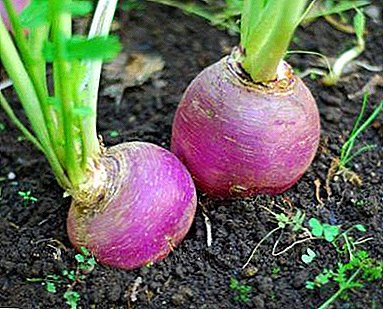 When the seedlings become stronger and obviously begin to interfere with each other - it is time to thin out 4 cm apart, and when the plants have four leaves, they are thinned again to a distance of 15 cm.
When the seedlings become stronger and obviously begin to interfere with each other - it is time to thin out 4 cm apart, and when the plants have four leaves, they are thinned again to a distance of 15 cm.- One of the main secrets of successful landing or swede sowing is wet soil, therefore the grooves should be moistened beforehand. In order for moisture to reach the seeds, the beds are compacted, and after a few days they destroy the crust formed on the soil.
- During the season, for swede, two procedures for loosening between the rows are required, for the first time to a depth of about 10 cm, for the next 5 cm, and also 2-3 weedings.
- It may happen that on the garden as if extra plants are being formed - this is not scary, they can be safely transplanted to another place, the main thing: together with a piece of land. But the strongest plants should be left on the main bed, forming rows in a checkerboard pattern.
- In the middle of summer, it is best to fertilize swede with a solution of manure: 1:10 (where one part of the litter, 10 parts of water), with a calculation of about 10 liters of solution per 5 squares. This solution can be poured between the rows of a regular watering can without a nozzle.
- When the growing season comes - this is the period of the most active growth of the plant, the swede needs to be watered several times a week, as well as a little spud.
- Swede - a very moisture-loving plant, so during dry periods it is worth watering at the rate of 2 liters per 1 m2, and later 7-8 liters, while moistening the soil to the full depth, and not just at the tops.
Common mistakes in farming
Mainly, this is the choice of soil and place for a bed (it is worthwhile to dwell on the northern part of the plot), as well as the balance in irrigation: the disadvantage - the root crop becomes hard and bitter, too much watering - the fruits lose taste and become watery. Therefore, it is better to water the beds with turnips more often, but try not to flood them.
Collection and storage
Starting to grow turnips, you should determine the objectives: whether it will be a product for cooking, or a feed option.
It is better not to bring the swede, which will be used for human food, to a weight of more than 1 kg, but it can be removed from the bed when it reaches an average diameter of 6 cm.
Harvesting vegetables produced before the onset of frost, cutting off tops and small roots. It is best to store swede in cellars in boxes, sprinkling root vegetables with river sand or peat, at a temperature not exceeding 4 ° C. If the site is located in the southern latitudes, with warm winters, the swede can be dug as needed.
Diseases and pests
 The biggest drawback of swede - low resistance to pests and diseases. The main enemies of this plant are:
The biggest drawback of swede - low resistance to pests and diseases. The main enemies of this plant are:
- Cruciflo flea.
They fight it with the help of wood ash, pouring between rows.
- Cabbage Fly.
This pest drives a mixture of naphthalene and sand, in a ratio of 1:10, which also processes inter-row spans, and repeat the procedure after two weeks.
How can you avoid problems?
There is no universal answer to this question, but there are a couple of tricks that should be noted:
- Minerals. Phosphorus increases sweetness in the swede, and if the plant lacks boron, its flesh becomes brown and fresh.
- To avoid plant disease, the seeds are subjected to heat treatment: the water is heated to 50 ° C and the seeds are soaked in it for half an hour, then dried in a cloth and mixed with calcined sand.
Rutabaga is an excellent source of vitamin C and fiber, folic acid and potassium. British social research recognized this vegetable as one of the most dangerous (along with other hard fruits: pumpkin and turnip) - still, after all, one fifth of the respondents indicated that it was the one who suffered in the kitchen. But these difficulties, as well as not the simplest cultivation, should not stop you, because this is the case when all efforts pay off.


 When the seedlings become stronger and obviously begin to interfere with each other - it is time to thin out 4 cm apart, and when the plants have four leaves, they are thinned again to a distance of 15 cm.
When the seedlings become stronger and obviously begin to interfere with each other - it is time to thin out 4 cm apart, and when the plants have four leaves, they are thinned again to a distance of 15 cm.
